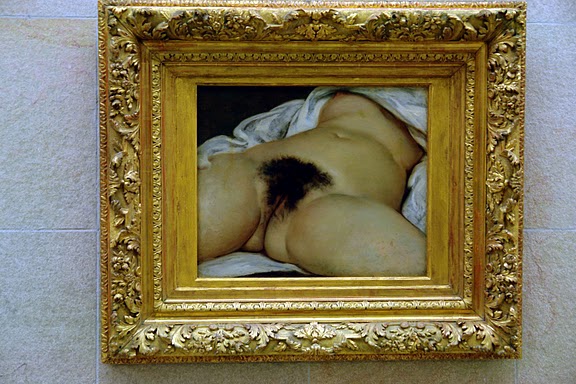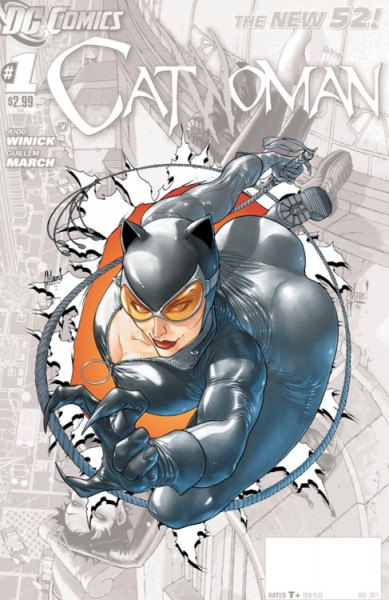Judith Butler is best known for stating that “all gender is performance.” However, as far as I know, she never actually said that. What she did say was that gender was “an imitation without an origin.” By this, she meant that there was no “true” or “natural” gender — and, perhaps even more importantly, no true or natural gendered acts. So wearing pink wasn’t “natural” for girls, any more than playing football was natural for boys. Rather, every gendered action or choice (like wearing pink) was an imitation picked up from other cultural sources or discourses. But these imitations had no origin — only referents which in turn had other referents.
So, for example, a little boy might wear a pink dress imitating a princess in a cartoon. But the princess in the cartoon was herself wearing a pink dress in imitation of other princesses, who were wearing it in imitation of other stories or combinations of stories. The boy’s supposedly deviant gender expression is artificial…but the natural gender expressions are artificial too. Gender has no origin, which means that you can’t use origins to police gender. Queer people are no more artificial than straight people. Indeed, to the extent that their gender expression highlights artificiality (as in drag), their gender expression is more true, since it acknowledges the lack of origin which straight gender expression attempts to elide.
So in that context, let’s consider Courbet’s infamous, quite, quite NSFW painting, The Origin of the World.
This painting was a private commission, and eventually found its way into the collection of Lacan, believe it or not.
Obviously, Courbet in this image is linking gender and origins in a fairly flamboyant way. On the one hand, you could argue that, like the title says, the female genitalia are literally figured as the site creating, or birthing gender — the site of difference if you’re Lacan, perhaps. Gender is a physical reality, and woman is defined by that reality as a lack to be filled with looking. The person of the woman (like, for example, her face) is left off as irrelevant; all that matters is the gender, an origin without imitation.
But are we really supposed to take the title that literally? Or, to put it another way, isn’t part of the joke, and part of the satisfaction, that this is precisely a copy — a image of that which is not meant to be imitated? And the rush (or a rush anyway) is precisely the insouciance with which the imitation is an imitation. Contra Stanley Cavell, the point here is not the powerful illusion of reality created by what is excluded from the frame — rather, the point is the brass insistence that nothing outside the frame matters, that the copy, not despite but because of its artificially constricted view, is the gender and the world. Gender here is manipulable and diceable, packageable and consumable. The painting is fun and funny not because it shows you the profound, true origin of the world, but because it mocks that profundity — because it says that that profundity does not exist except as a toy for you to do with as you will.
Along those lines:
In this issue, as you can see, Catwoman fights her posterior, which has attained sentience and is climbing up her spine to throttle her with her own sphincter.
Here, then, in Catwoman’s origin story, is a clearly ersatz imitation of gender — an imitation so ersatz that just by existing it makes the superheroine imitations its based on all look more than a little ridiculous. IF the truth of gender is artificiality, then this is surely as artificial and therefore as true, as gender comes.
But, of course, most critics of whatever gender and sexual orientation who have seen this haven’t enthused about its subversive liberation from the hierarchical hold of gender essentialism. Rather, folks have mostly pointed out that it’s incompetent sexist nonsense, which manages to look less like a real, actual human type person than Courbet’s severed torso.
For the Catwoman cover, then, a reference to origins — to real gendered bodies — is used as a check on an image that (semi-) deliberately indulges in artificial imitation. Here and (much) more competently in Courbet, the erasure of the origin leads not to a polymorphous free play of artificial gender possibilities outside of the restrictive hierarchy, but simply to a gendered imagining that hermetically, and gleefully, excludes actual women.
If everything’s imitation, if there is no real gender, then gender will simply be made and remade by whoever has the power — which is going to be the same people who always have the power. How do you say, “a cunt is not a woman,” if you’re not allowed to define “woman”? If there is no reality, on what basis can you criticize images for sexist distortions of it? Having to keep it real can certainly be oppressive…but, at least sometimes, it’s preferable to being someone else’s decapitated or spineless image.
______________
The title of this post is a crib from DCWKA. That Catwoman cover (which it seems cruel to attribute, but what the hey) was drawn by Guillem March.


